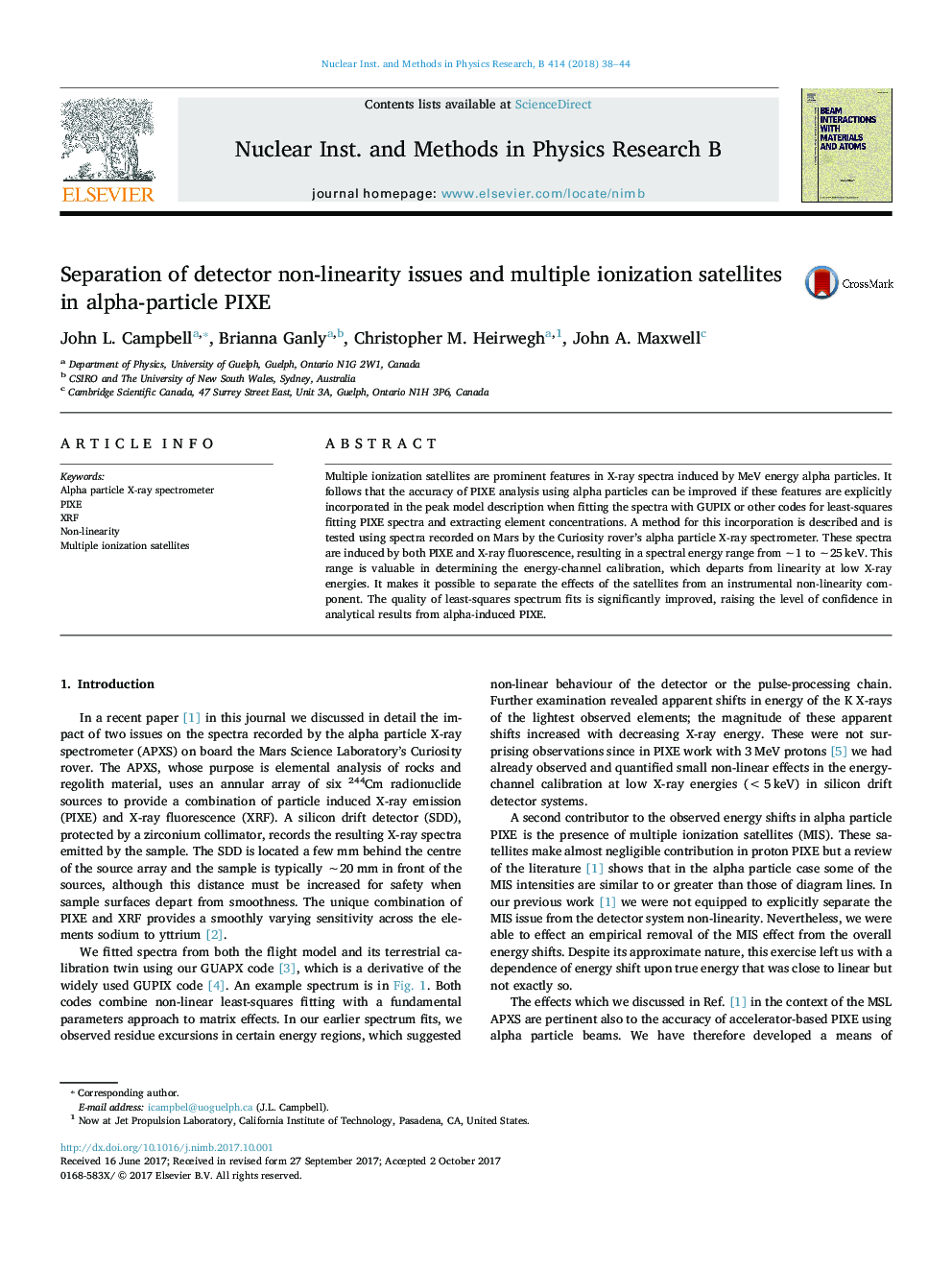| Article ID | Journal | Published Year | Pages | File Type |
|---|---|---|---|---|
| 5467103 | Nuclear Instruments and Methods in Physics Research Section B: Beam Interactions with Materials and Atoms | 2018 | 7 Pages |
Abstract
Multiple ionization satellites are prominent features in X-ray spectra induced by MeV energy alpha particles. It follows that the accuracy of PIXE analysis using alpha particles can be improved if these features are explicitly incorporated in the peak model description when fitting the spectra with GUPIX or other codes for least-squares fitting PIXE spectra and extracting element concentrations. A method for this incorporation is described and is tested using spectra recorded on Mars by the Curiosity rover's alpha particle X-ray spectrometer. These spectra are induced by both PIXE and X-ray fluorescence, resulting in a spectral energy range from â¼1 to â¼25â¯keV. This range is valuable in determining the energy-channel calibration, which departs from linearity at low X-ray energies. It makes it possible to separate the effects of the satellites from an instrumental non-linearity component. The quality of least-squares spectrum fits is significantly improved, raising the level of confidence in analytical results from alpha-induced PIXE.
Related Topics
Physical Sciences and Engineering
Materials Science
Surfaces, Coatings and Films
Authors
John L. Campbell, Brianna Ganly, Christopher M. Heirwegh, John A. Maxwell,
